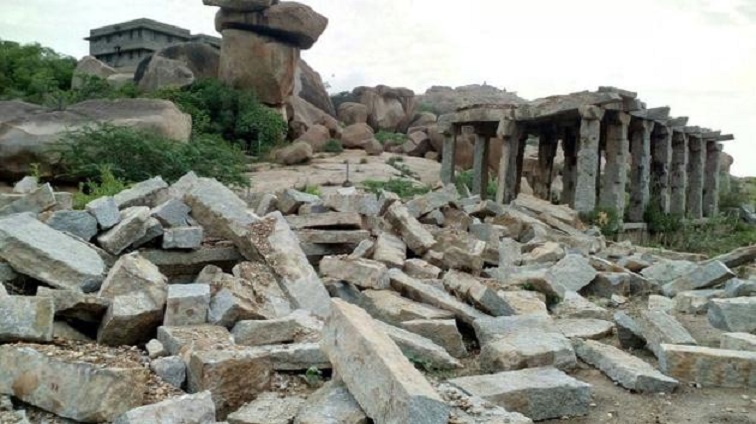
heavy rain on Tuesday evening [Credit: The Hindu]
But officials of the Archaeological Survey of India (ASI) say it is not just the rain that should be blamed. The granite pillars in the bazaar were in a dilapidated condition, with the foundation of the structures weakening over the years due to loosening of soil caused by water stagnation.
Several ‘saalu mantapas’ line either side of the road from the Virupaksha temple to the ‘Edhuru Basava’ which earlier served as space for business.
“The work of resurrecting these mantapas was proposed and the pillars were also numbered. The work was expected to begin shortly, but they collapsed before that. Steps will be taken to restore the mantapas to their original at the earliest,” ASI officials said.
It was only recently that the United Nations Educational, Scientific and Cultural Organization (UNESCO) had raised concerns over irrigation and water-intensive agricultural practices in the area posing a threat to the heritage structures located in agricultural fields.
This is not the first time that the mantapas have faced threat. In December 2013, a couple of pillars at the same bazaar were damaged when a lorry loaded with material for putting up a pandal for the upcoming Hampi Utsav hit a couple of pillars. Earlier, construction of a bridge close to the Hampi monuments had invited the UNESCO’s wrath.
Author: M. Ahiraj | Source: The Hindu [June 18, 2015]